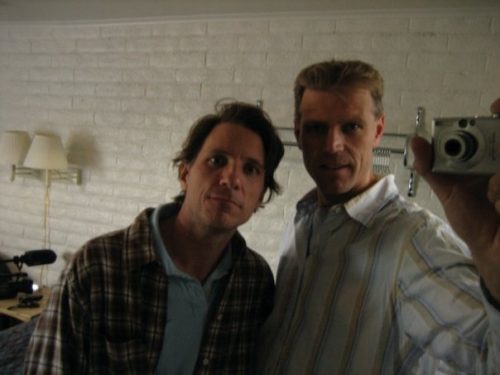I subscribe to the American Society of Landscape Architect‘s newsletter, The Dirt. Recently Nate Wooten covered a lecture delivered by landscape architect Shane Coen, ASLA, founder of Coen + Partners, who started off by asking:
“Who Taught You How to See?”
For Coen, the answer is his father, the painter Don Coen. After I read the piece I wondered about the idea of learning to see. Most of us with unimpaired vision just see, there’s no learning involved. It’s like breathing, right? Well, no. There’s seeing and there’s seeing! (And anyone who is serious about meditation or yoga will tell you there’s breathing and there’s breathing!)
So, how did I learn to see? Who taught me? Thinking back, there have been a few people who taught me different aspects of this skill.
When I was in college, I was visiting my friend Meg at the University of Delaware. It was a late spring afternoon and we sat on a bench. Meg was a graphic design major with a fondness for David Hockney. Somehow we got to talking about color and she directed my attention to a tree . “I mean, look at that tree. Look at all those greens!”
Yes, I knew there were different greens, as a child I had the big box of Crayola crayons with all its shades of green. But this was different. That tree showed me hundreds, maybe thousands of greens. It was positively eye-opening, and no, there were no mind-altering substances involved.
About twenty years later I took a figure drawing class at the New School. I enrolled because I wanted to use a part of my brain I felt I wasn’t using and I wanted to challenge myself, do something I had convinced myself I couldn’t do. The teacher was, Simon Dinnerstein, a very fine artist. I would leave his class and take the train home and stare at faces for more time than subway decorum dictates. I wasn’t seeing “faces,” I was seeing lines, tracing them with the pencil in mind’s eye, trying to figure out how I’d draw that nose, that chin, that hair. I had never looked at the human body like this before.

Several years later I was in Michigan with cinematographer Wolfgang Held. We were shooting David Milarch as he walked through a forest. It was snowing and windy. We were looking around for some b-roll footage. I became mesmerized by tree tops swaying. I told Wolfgang I wanted that shot and he said the camera wouldn’t capture it the way I was seeing it. He was correct. Before he said that I knew cameras didn’t “see” like eyes, but it wasn’t until he said that that I apprehended it. Despite this display of ignorance Wolfgang, whenever he saw that something caught my attention, would ask, “What are you seeing?”

I was flattered the first time he asked that but I also understood that, yes, cinematographers see better than I do, but sometimes (rarely) I see things they don’t.
And that’s why now that I act as a cinematographer at my day job at the education factory, I ask my assistant (when I have one), “What are you seeing?”
There are many other people who taught me how to see. How to see buildings, stars, art, gestures, acting, edits, birds, rocks, lichen, fire, emotions and more. And of course there are many people who taught me how to hear and taste and …
Who taught you how to see?
For more about seeing color check out this episode of RadioLab.
Want to help A Life’s Work?
Donate Now!
